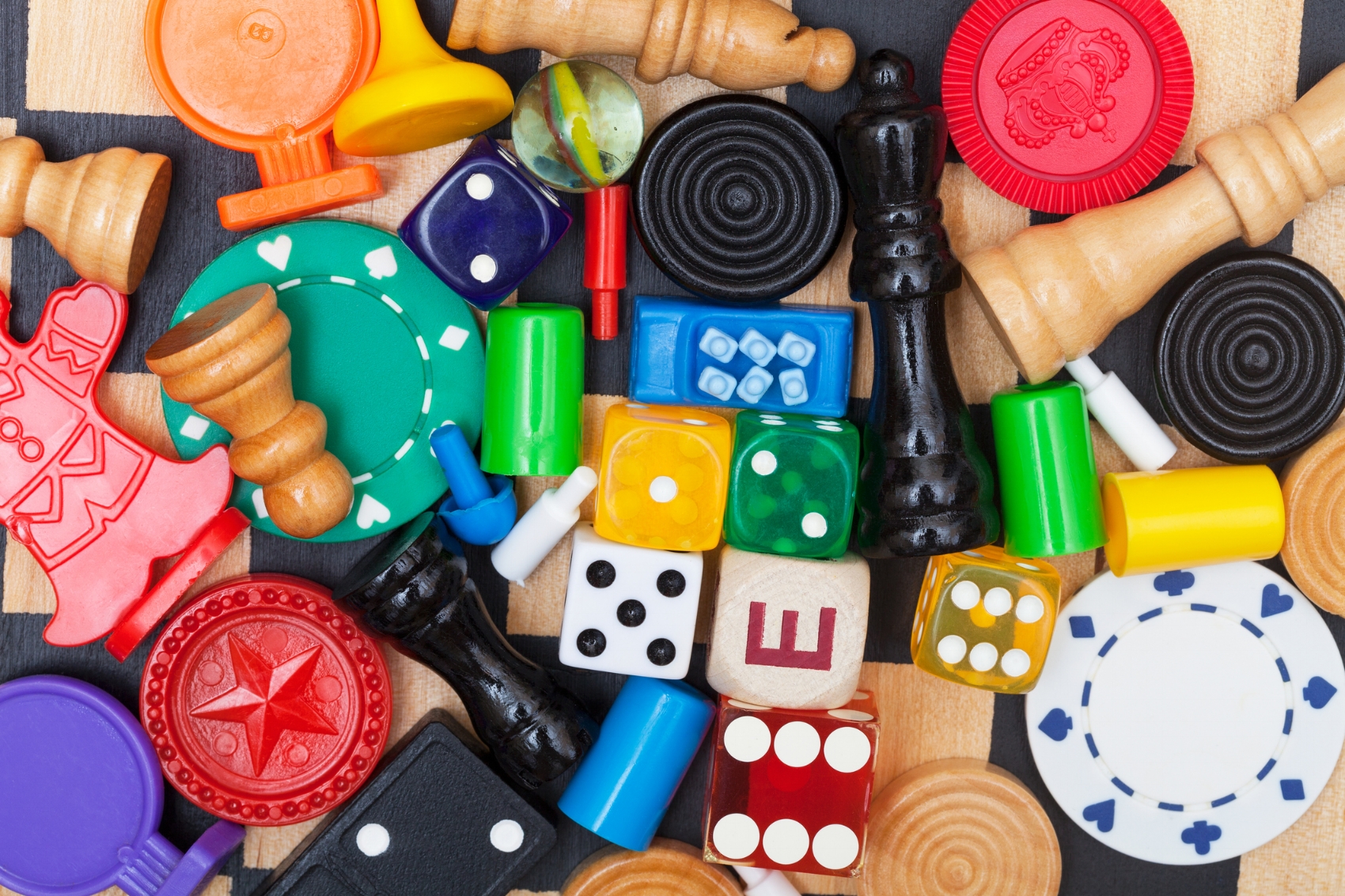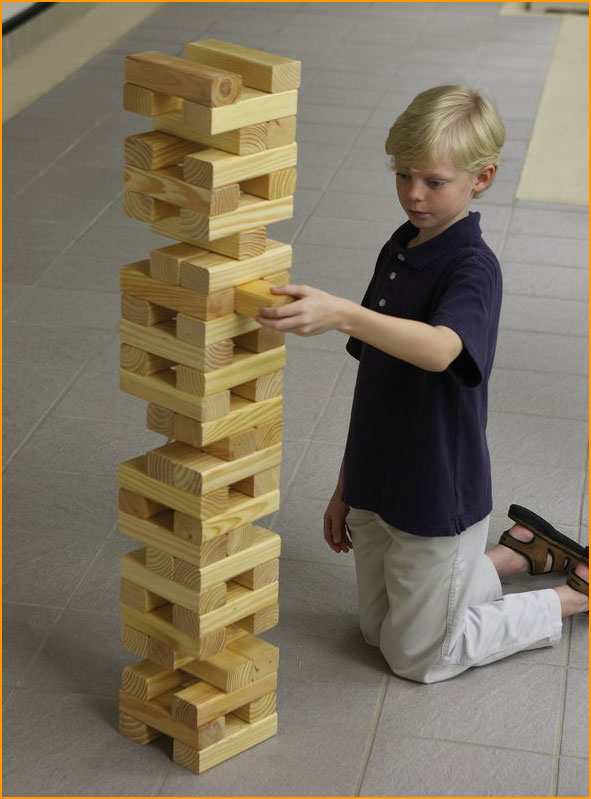Uno Jenga
Posted : admin On 4/8/2022Uno Stacko is Jenga with Uno rules. In this game, the blocks are colored green, red, yellow and blue, numbered from 0 to 9, and there are some action blocks. Each player pulls a block with the color or number of the previously stacked block. When a player stacks a Reverse block, the direction of play is reversed. Instructions for Uno Stacko. Learn More → Jenga is a game that is produced by the Hasbro company. The game set-up involves building a tower of blocks 18 rows high and three blocks wide. Players take turns removing one block at a time and placing it at the top of the tower. Whichever player knocks the tower over first loses. Carefully pull a Jenga block out of the tower and place it on top. It's easy at first, but as more blocks get pulled, the Jenga tower starts to get unsteady. Players will be on the edge of their seats just trying to keep the tower from tumbling. The classic Jenga game is quick to set up, and can be played just about anytime, almost anywhere.
 Quiz:
Quiz:
Equipment for UNO as a drinking game ✅
- Alcoholic beverages like beer or booze
- At least two players
UNO drinking game set-up 👌

All players sit around a table and the mixed UNO cards are placed face-down in the middle of the table.
Procedure and rules of UNO as a drinking game
The youngest player starts and draws a card. Thereafter, one more card is drawn in clockwise direction. You have to drink if:
- You draw the same color as the player before.
- You draw the same number as the player before.
- If you draw a suspension card, you may choose a player to drink.
- With a return card the direction is changed just like in a normal game of Uno.
- Draw-two card: The player next in line to draw a card drinks. (If your draw-two card is the same color as the previous card, you must drink as well.)
- Plus four: Everyone must drink.
The game is played until all cards have been drawn once. Various additional rules listed below can be added. Be warned, these rules increase the intensity of the drinking game.
Additional rules for UNO as a drinking game
- If you draw any kind of plus card you have to drink a shot
- If you draw any kind of plus card you have to jug a whole beer
UNO rules mixed with Kings Cup rules
Place a cup in the middle. Every time a plus four card is drawn, something happens similar to Kings Cup:
- The first player who draws a plus four card is allowed to pour alcohol of his choice into the cup.
- The second player who draws a plus four card may add a soda of his choice to the cup.
- The third player drawing a plus four card must take a sip of that drink.
- The fourth player who draws a plus four card must drink the whole cup.
If you know more additional rules for Uno as a drinking game shoot us an email.
Dangers of UNO as a Drinking Game ⚠️
As fun as UNO as a drinking game is, please drink responsibly and don’t drink and drive. Have fun playing UNO the Drinking Game! ✌️
✍️ March 20, 2019

Updated Programmers were left staring at broken builds and failed installations on Tuesday after someone toppled the Jenga tower of JavaScript.
A couple of hours ago, Azer Koçulu unpublished more than 250 of his modules from NPM, which is a popular package manager used by JavaScript projects to install dependencies.
Koçulu yanked his source code because, we're told, one of the modules was called Kik and that apparently attracted the attention of lawyers representing the instant-messaging app of the same name.
According to Koçulu, Kik's briefs told him to rename the module, he refused, so the lawyers went to NPM's admins claiming brand infringement. When NPM took Kik away from the developer, he was furious and unpublished all of his NPM-managed modules. 'This situation made me realize that NPM is someone’s private land where corporate is more powerful than the people, and I do open source because Power To The People,' Koçulu blogged.
Uno Jenga Amazon
Unfortunately, one of those dependencies was left-pad. The code is below. It pads out the lefthand-side of strings with zeroes or spaces. And thousands of projects including Node and Babel relied on it.
Uno Jenga Target
With left-pad removed from NPM, these applications and widely used bits of open-source infrastructure were unable to obtain the dependency, and thus fell over during development and deployment. Thousands, worldwide. Left-pad was fetched 2,486,696 times in just the last month, according to NPM. It was that popular.
You can witness some of the fallout here, here, here and here.
To fix the internet, Laurie Voss, CTO and cofounder of NPM, took the 'unprecedented' step of restoring the unpublished left-pad 0.0.3 that apps required. Normally, when a particular version is unpublished, it's gone and cannot be restored. Now NPM has forcibly resurrected that particular version to keep everyone's stuff building and running as expected.
'Un-un-publishing is an unprecedented action that we're taking given the severity and widespread nature of breakage, and isn't done lightly,' Voss explained about an hour ago.
'This action puts the wider interests of the community of NPM users at odds with the wishes of one author; we picked the needs of the many. This whole situation sucks. We will be carefully considering the issues raised by and publishing a post-mortem later.
'In the meantime, several thousand open source projects have been repaired, and I'm sleeping fine tonight.'
A new maintainer, who stepped forward to look after left-pad on NPM, requested the restoration of version 0.0.3. Meanwhile, Oakland-based Koçulu has hosted his work on GitHub. If your code still won't build after the left-pad revival, try running npm cache clear to catch up with the changes.
And that's how JavaScript app development works in 2016. ®
Updated to add at 1138 PT (1838 UTC) on March 23
A spokesperson for Kik has been in touch to point us toward a blog post by Mike Roberts, the head of messenger at Kik, setting out its side of the story. It was published about 30 minutes ago.
Essentially, the instant-messaging biz says it was going to publish some open-source code including an NPM module also named Kik. That collided with Koçulu's Kik module, which is why the developer was asked to rename his software. As we know, Koçulu refused, and that led to Tuesday's cluster-fsck.
Referring to the emails sent by Kik's lawyer to Koçulu, Roberts said: 'The wording we used here was not perfect. We’re sorry for creating any impression that this was anything more than a polite request to use the Kik package name on NPM for an open source project we have been working on that fits the name.'